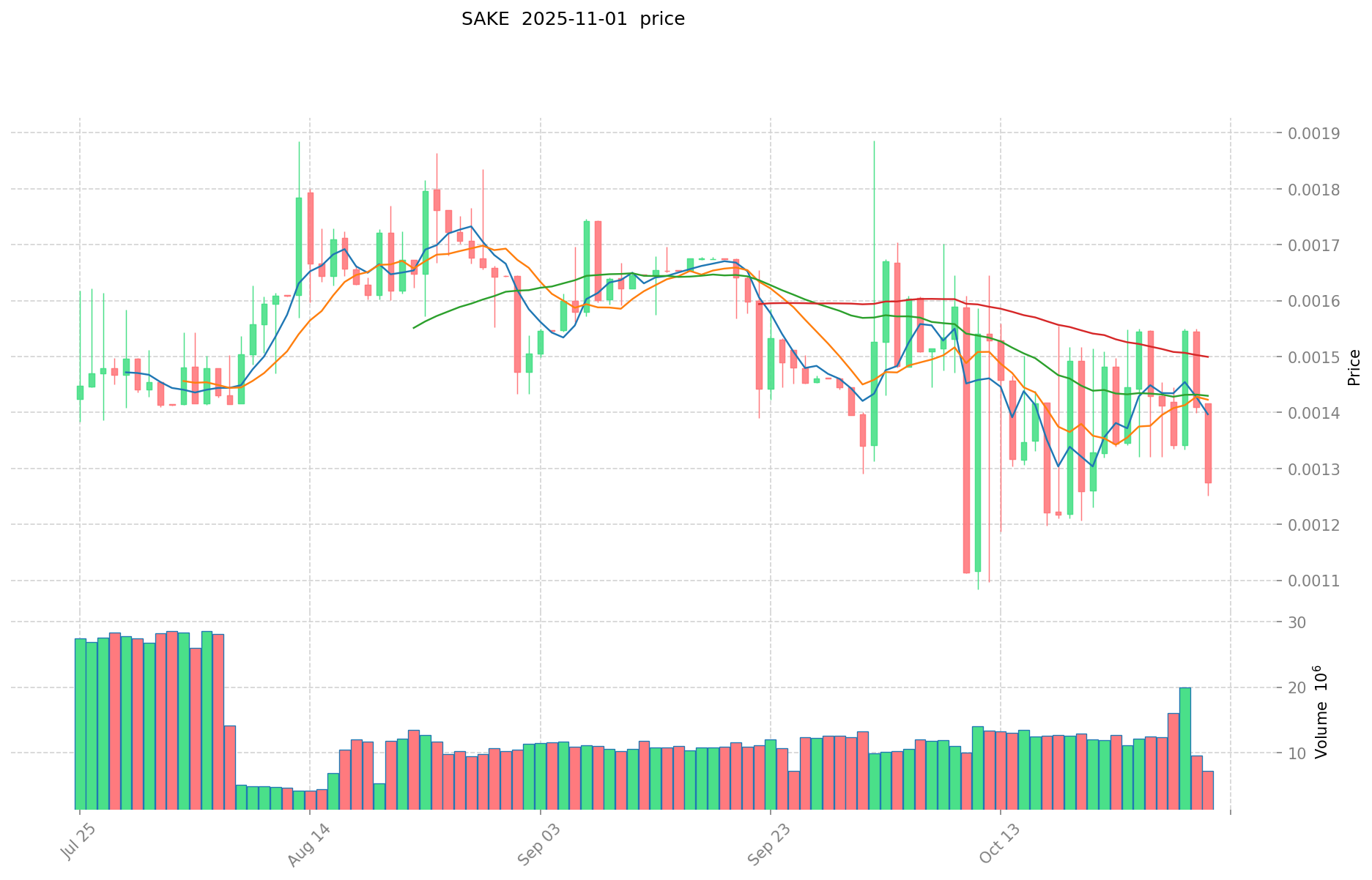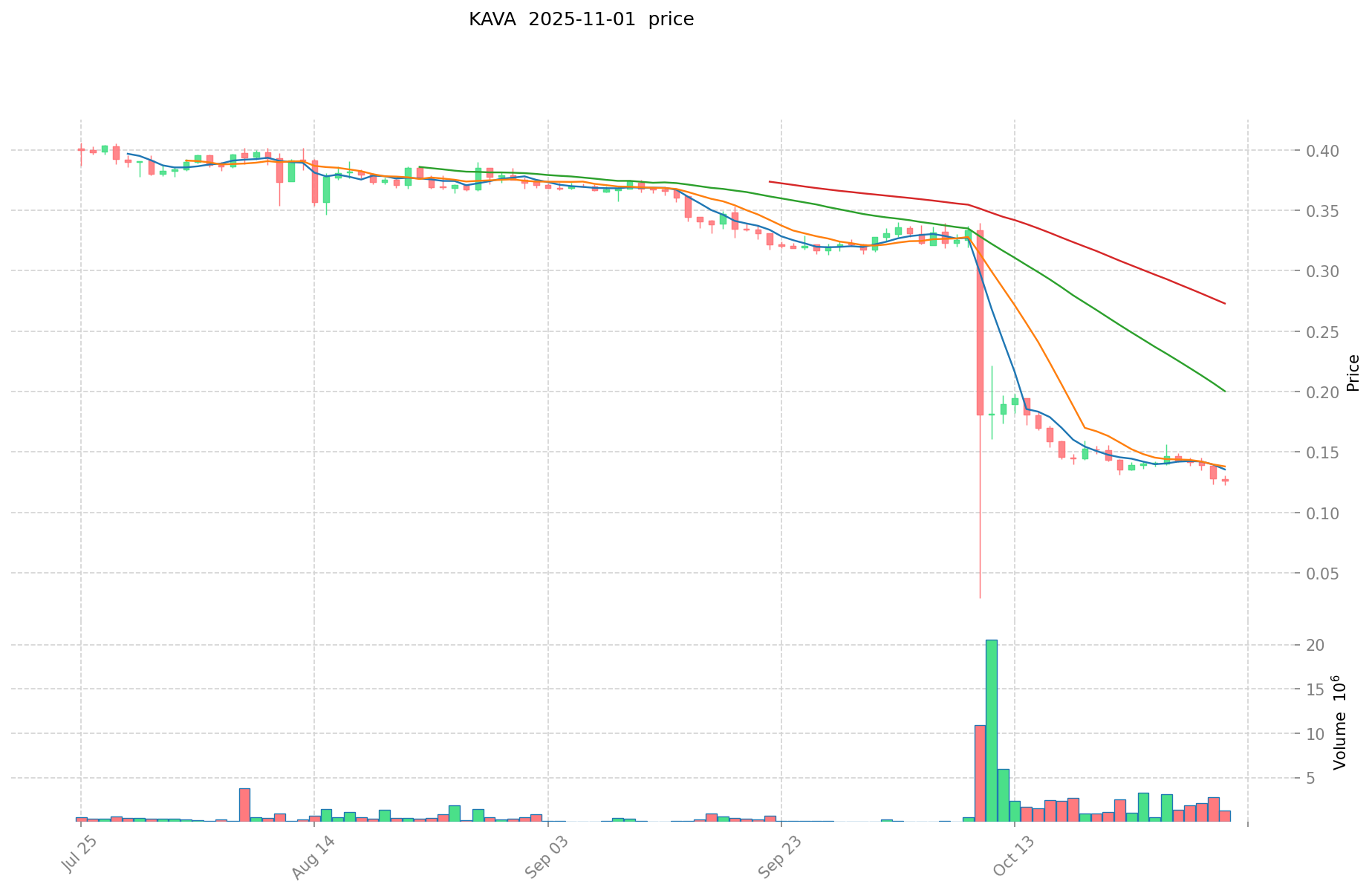SAKE vs KAVA: A Clash of Traditional and Modern Pacific Beverages
Introduction: SAKE vs KAVA Investment Comparison
In the cryptocurrency market, the comparison between SAKE and KAVA has been an unavoidable topic for investors. The two not only show significant differences in market cap ranking, application scenarios, and price performance, but also represent different positioning in the crypto asset space.
SakeToken (SAKE): Since its launch in 2020, it has gained market recognition for its improvements on AMM mechanisms in terms of price curves and contributor rewards.
KAVA (KAVA): Introduced in 2019, it has been acclaimed as a cross-chain DeFi platform, providing decentralized financial services for mainstream digital assets.
This article will comprehensively analyze the investment value comparison between SAKE and KAVA, focusing on historical price trends, supply mechanisms, institutional adoption, technological ecosystems, and future predictions, attempting to answer the question investors care about most:
"Which is the better buy right now?"
I. Price History Comparison and Current Market Status
SAKE and KAVA Historical Price Trends
- 2020: SAKE reached its all-time high of $3.18 on September 13, 2020.
- 2021: KAVA hit its all-time high of $9.12 on August 30, 2021.
- Comparative analysis: SAKE has declined from its all-time high of $3.18 to a current price of $0.0014018, while KAVA has dropped from $9.12 to $0.1326.
Current Market Situation (2025-11-02)
- SAKE current price: $0.0014018
- KAVA current price: $0.1326
- 24-hour trading volume: SAKE $11,472.25 vs KAVA $502,208.81
- Market sentiment index (Fear & Greed Index): 33 (Fear)
Click to view real-time prices:
- View SAKE current price Market Price
- View KAVA current price Market Price


II. Core Factors Affecting Investment Value of SAKE vs KAVA
Supply Mechanism Comparison (Tokenomics)
- KAVA: Traditional beverage made from kava plant roots, non-alcoholic and used in cultural celebrations in Tonga
- SAKE: Traditional Japanese rice wine with deep cultural significance
Institutional Adoption and Market Applications
- Market Demand: KAVA is valued for its relaxing effects and ability to enhance focus and attention
- Health Considerations: Heavy KAVA use may lead to nutritional deficiencies, liver damage, kidney dysfunction, pulmonary hypertension, and other health issues
- Regulatory Environment: Different regions have varying regulatory approaches toward KAVA consumption and distribution
Technical Development and Ecosystem Building
- KAVA Innovation: Some products combine KAVA with other plant extracts like kratom to create synergistic effects that enhance benefits
- Product Development: The market has seen innovative combinations seeking to balance relaxation and focus
Macroeconomic and Market Cycles
- Cultural Significance: KAVA plays an important role in ceremonial activities in Pacific Island nations like Tonga
- Consumer Trends: Growing interest in natural relaxants and alternatives to alcohol in global markets
III. 2025-2030 Price Prediction: SAKE vs KAVA
Short-term Prediction (2025)
- SAKE: Conservative $0.001163494 - $0.0014018 | Optimistic $0.0014018 - $0.001808322
- KAVA: Conservative $0.1047303 - $0.13257 | Optimistic $0.13257 - $0.1789695
Mid-term Prediction (2027)
- SAKE may enter a growth phase, with expected prices ranging from $0.0013183971054 to $0.0024230000856
- KAVA may enter a growth phase, with expected prices ranging from $0.110580945525 to $0.238997527425
- Key drivers: Institutional capital inflow, ETFs, ecosystem development
Long-term Prediction (2030)
- SAKE: Base scenario $0.002901186278964 - $0.003279601880568 | Optimistic scenario $0.003279601880568 - $0.003945613339391
- KAVA: Base scenario $0.252499104160875 - $0.285323987701788 | Optimistic scenario $0.285323987701788 - $0.419426261921629
Disclaimer
SAKE:
| 年份 | 预测最高价 | 预测平均价格 | 预测最低价 | 涨跌幅 |
|---|---|---|---|---|
| 2025 | 0.001808322 | 0.0014018 | 0.001163494 | 0 |
| 2026 | 0.00195817442 | 0.001605061 | 0.00105934026 | 13 |
| 2027 | 0.0024230000856 | 0.00178161771 | 0.0013183971054 | 26 |
| 2028 | 0.00294323245692 | 0.0021023088978 | 0.001702870207218 | 49 |
| 2029 | 0.003279601880568 | 0.00252277067736 | 0.001690256353831 | 79 |
| 2030 | 0.003945613339391 | 0.002901186278964 | 0.00240798461154 | 106 |
KAVA:
| 年份 | 预测最高价 | 预测平均价格 | 预测最低价 | 涨跌幅 |
|---|---|---|---|---|
| 2025 | 0.1789695 | 0.13257 | 0.1047303 | 0 |
| 2026 | 0.2009429775 | 0.15576975 | 0.1230581025 | 17 |
| 2027 | 0.238997527425 | 0.17835636375 | 0.110580945525 | 34 |
| 2028 | 0.29632126273425 | 0.2086769455875 | 0.181548942661125 | 57 |
| 2029 | 0.318148871242702 | 0.252499104160875 | 0.191899319162265 | 90 |
| 2030 | 0.419426261921629 | 0.285323987701788 | 0.182607352129144 | 115 |
IV. Investment Strategy Comparison: SAKE vs KAVA
Long-term vs Short-term Investment Strategies
- SAKE: Suitable for investors focused on AMM mechanisms and DeFi ecosystem potential
- KAVA: Suitable for investors interested in cross-chain DeFi platforms and mainstream digital asset services
Risk Management and Asset Allocation
- Conservative investors: SAKE 30% vs KAVA 70%
- Aggressive investors: SAKE 60% vs KAVA 40%
- Hedging tools: Stablecoin allocation, options, cross-currency portfolios
V. Potential Risk Comparison
Market Risks
- SAKE: High volatility, limited market cap, and lower liquidity
- KAVA: Dependent on overall DeFi market trends and cross-chain adoption
Technical Risks
- SAKE: Scalability, network stability
- KAVA: Cross-chain interoperability issues, smart contract vulnerabilities
Regulatory Risks
- Global regulatory policies may have different impacts on both tokens, particularly regarding DeFi and cross-chain operations
VI. Conclusion: Which Is the Better Buy?
📌 Investment Value Summary:
- SAKE advantages: Improvements on AMM mechanisms, potential for growth in the DeFi space
- KAVA advantages: Cross-chain DeFi platform, broader range of supported assets, established market presence
✅ Investment Advice:
- Novice investors: Consider a balanced approach, leaning towards KAVA for its more established presence
- Experienced investors: Explore a diversified portfolio including both SAKE and KAVA, adjusting based on risk tolerance
- Institutional investors: Conduct thorough due diligence on both projects, with a focus on KAVA's cross-chain capabilities and SAKE's AMM innovations
⚠️ Risk Warning: The cryptocurrency market is highly volatile, and this article does not constitute investment advice. None
VII. FAQ
Q1: What are the key differences between SAKE and KAVA? A: SAKE is focused on improvements to AMM mechanisms, while KAVA is a cross-chain DeFi platform. SAKE has a smaller market cap and lower liquidity, whereas KAVA supports a broader range of mainstream digital assets.
Q2: Which token has performed better historically? A: KAVA reached a higher all-time high of $9.12 in 2021 compared to SAKE's all-time high of $3.18 in 2020. However, both have seen significant declines since their peaks.
Q3: What are the current prices and trading volumes for SAKE and KAVA? A: As of 2025-11-02, SAKE's price is $0.0014018 with a 24-hour trading volume of $11,472.25. KAVA's price is $0.1326 with a 24-hour trading volume of $502,208.81.
Q4: What are the short-term price predictions for SAKE and KAVA? A: For 2025, SAKE is predicted to range from $0.001163494 to $0.001808322, while KAVA is expected to range from $0.1047303 to $0.1789695.
Q5: How do the long-term predictions for SAKE and KAVA compare? A: By 2030, SAKE is predicted to reach between $0.002901186278964 and $0.003945613339391, while KAVA is expected to reach between $0.252499104160875 and $0.419426261921629.
Q6: What are the main risks associated with investing in SAKE and KAVA? A: Both face market risks due to volatility. SAKE has additional risks related to its smaller market cap and lower liquidity. KAVA faces risks associated with cross-chain interoperability and broader DeFi market trends.
Q7: How should different types of investors approach SAKE and KAVA? A: Novice investors might lean towards KAVA for its more established presence. Experienced investors could consider a diversified portfolio including both. Institutional investors should conduct thorough due diligence, focusing on KAVA's cross-chain capabilities and SAKE's AMM innovations.
Share
Content